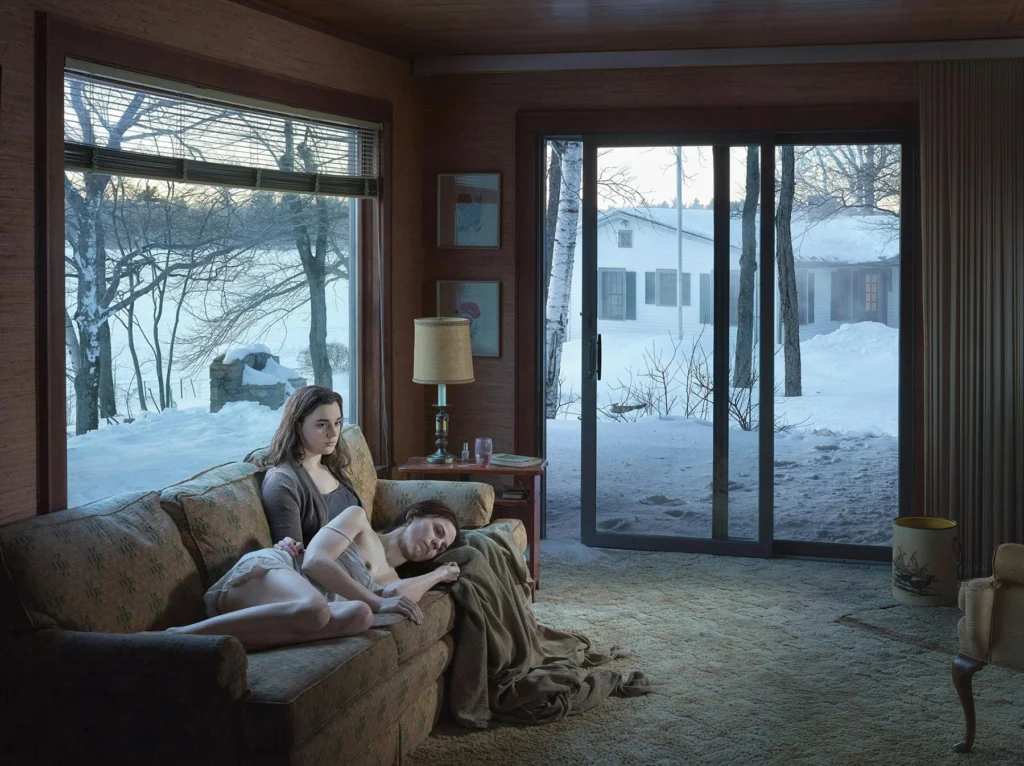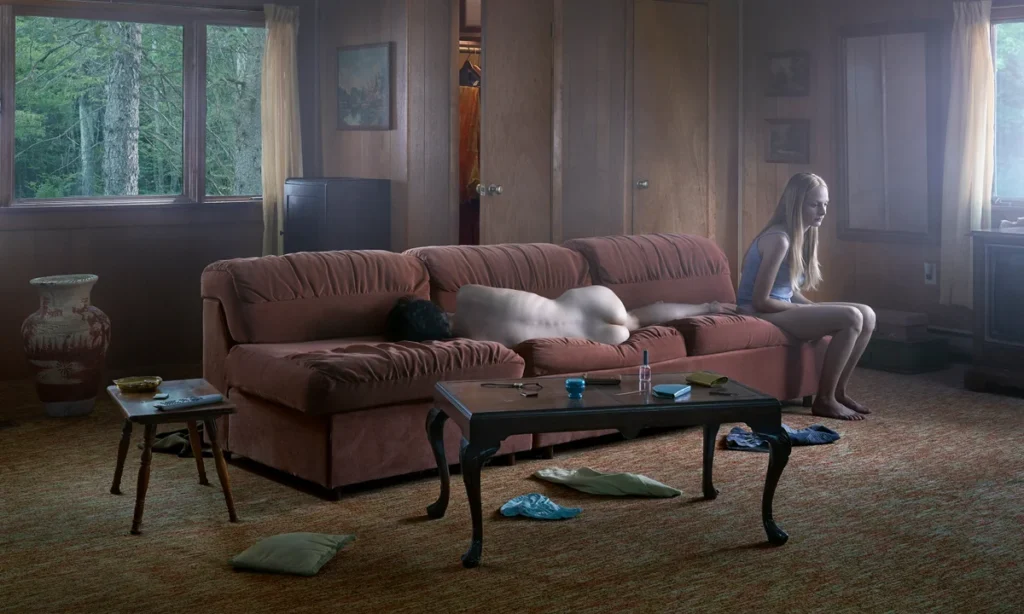Few photographers have shaped my view on visual storytelling as much as Gregory Crewdson. His work is a masterclass in atmosphere, composition, and narrative ambiguity. Crewdson is renowned for his large-scale, meticulously lit photographs that feel like stills from an unseen movie. His images exist in a space between reality and fiction, where the ordinary transforms into something eerie and profound.
Crewdson’s photography is the epitome of staged photography. Every detail—light, color, props, and positioning—is carefully orchestrated to tell a fragment of a story. Unlike documentary photography, which captures moments as they happen, staged photography constructs moments from the ground up. Crewdson’s images often depict small-town America with an underlying sense of melancholy and alienation. They are cinematic in their execution, featuring lonely figures lost in thought, bathed in twilight or the harsh glare of artificial lights. Each scene whispers a story but never shouts the full narrative, leaving the viewer to piece it together or dream it up entirely.

This approach has deeply influenced my own photography. I have always been drawn to the idea of only telling part of a story, inviting the viewer to fill in the gaps. That feeling of mystery, of something being just out of reach, is what makes an image linger in the mind. Crewdson’s ability to create worlds that feel simultaneously familiar and unsettling is something I strive for in my own work.
However, where Crewdson leans heavily into sorrow and isolation, I try to introduce small comedic elements into my scenes. His work is breathtakingly beautiful, but often drenched in an almost unbearable sadness. I love that, but I also feel the need to balance it with moments of awkwardness or subtle absurdity. Perhaps a character in an otherwise lonely and desolate scene is wearing a ridiculous bathrobe, or an object is slightly out of place in a way that makes you do a double take. Life, after all, is not just tragedy—it is also bizarre, ironic, and sometimes hilariously awkward.
Gregory Crewdson remains my biggest inspiration. His work has shown me the power of staged photography and how a single frame can feel as rich as an entire novel. But while I take cues from his meticulous approach and haunting atmospheres, I aim to add a slight twist—a whisper of humor amid the sadness, a moment of levity in the midst of the unknown.

At the core of my work, much like Crewdson’s, lies an exploration of human emotion and the tension between the mundane and the surreal. But rather than lingering solely in despair, I want to punctuate my images with details that make the viewer smirk before sinking into contemplation. A misplaced pool float in a dreary setting, an out-of-place party hat on a solitary figure—small touches that shift the mood ever so slightly, making the viewer second-guess their initial interpretation.
Photography, to me, is a form of storytelling that doesn’t need words. It’s a puzzle, an invitation, and a reflection all in one. Crewdson’s images have taught me that an evocative scene can say more than an entire film, and I hope to craft images that resonate just as deeply—perhaps with a wry smile alongside the melancholic sigh.
